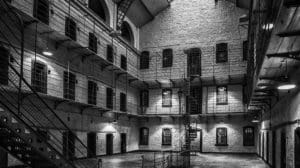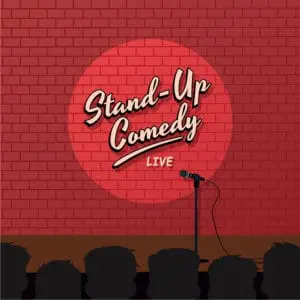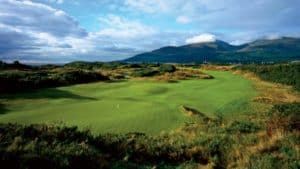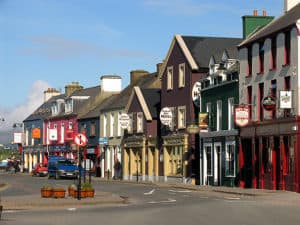The Tradition and Folklore of Irish Pubs: Unpacking Rich Heritage and Tales

Updated On: March 12, 2024 by Maha Yassin
Stepping into an Irish pub is like walking through a portal to a world steeped in tradition and folklore. With their origins dating back centuries, these public houses have become enduring symbols of Irish culture. They are more than just establishments for enjoying a pint; they are social hubs where locals and visitors gather to share stories, celebrate events, and commiserate over life’s ups and downs. The rich history and atmosphere within the walls of an Irish pub can be felt the moment one walks through the door, creating an immediate sense of community and belonging.
The architecture and interiors tell a tale of the past, showcasing traditional wooden bars, cosy snugs, and walls adorned with memorabilia echoing Ireland’s cultural and literary legacy. Historically, these pubs have played a pivotal role in the local communities, acting as theatres for traditional Irish music and dance hosting spontaneous performances that carry on to this day. From the clink of glasses to the hum of conversation, the ambience in an Irish pub is a unique blend of friendliness and rustic charm. The customs and etiquette observed here are a dance of respect and camaraderie, with every sip and song contributing to the narrative tapestry that envelops Irish pub culture.
Historical Evolution of Irish Pubs
In tracing the historical backdrop of Irish pubs, we uncover a tale that begins in the early centuries and evolves through societal changes, including the Temperance Movement, eventually leading to the establishments we recognise today.
Origins and Development
The saga of Irish pubs is a rich tapestry woven into the country’s cultural fabric for centuries. The earliest manifestations of what we’d now call a pub can be traced back to the Brazen Head in Dublin, reputed to be Ireland’s oldest pub, with a history extending into the 12th century. The traditional Irish pub, central to Ireland’s social scene, initially emerged from monastic settlements as early as the 7th century, which were pivotal in brewing and shaping early drinking establishments.
Impact of the Temperance Movement
The Temperance Movement in the nineteenth century changed Irish pub culture significantly. This initiative, aiming to curb alcohol consumption, significantly influenced pubs’ operations, with many adapting by offering alternative activities and non-alcoholic beverages. It was a movement of notable scale and influence across Ireland, affecting public drinking habits and the social role of the pub.
The transition from Spirit Grocers to Pubs
A profound shift occurred from spirit grocers to dedicated public houses. Spirit grocers were hybrid establishments operating as grocery shops and places to purchase alcoholic beverages. However, legal changes and evolving consumer trends in the nineteenth century separated these functions, giving rise to the modern pub—a specialised social venue for storytelling, music, and communal engagement.
Irish pubs have always been more than mere drinking spots. They’re living repositories of history, community, and culture, continually adapting to societal changes while maintaining their quintessential character.
Architectural Features and Interiors

The rich tapestry of Irish pub interiors and architectural features provides a nod to tradition and a practical approach to communal space. From the warmth of wood panelling to the multi-functionality of rural pubs, each element tells a story of Ireland’s social and architectural history.
Design Signature
Irish pubs are celebrated for their distinctive aesthetic, often including earthy greens, browns, and copper tones. This palette helps to craft a cosy and welcoming atmosphere. A central feature of these interiors is the use of wood, both in the bar itself and in the panelling and furniture that adorn the establishment. The ceilings may retain the original exposed beams, adding to the traditional Irish pub charm. In many pubs, the walls are filled with memorabilia and artefacts that reflect the local culture and history, intertwining the present with the past.
Multifunctional Spaces
Historically, pubs in Ireland served as places for drinking and multiservice venues, fulfilling various community needs, particularly in rural areas. Indeed, it was not unusual for a pub to operate as a grocery or hardware store, providing a one-stop shop for patrons. These multifunctional spaces were often found in small villages, integrating the social aspects of life with everyday practicalities. The layout of these pubs was designed to accommodate different functions, with areas distinctly allocated for socialising and other sections for commercial transactions. The legacy of these hybrid spaces, known as “pub with no beer,” endures in some rural pubs, although the concept has evolved with changing times.
The Role of Irish Pubs in Local Communities
Irish pubs have long served as vital pillars within local communities, offering more than just a pint. They act as community centres and social hubs, playing a key role in the cultural fabric of Ireland.
Community Centres
In the landscape of Ireland, especially within rural areas like County Westmeath, public houses are often the heartbeat of the village. They function as a community centre where local news is exchanged and support is offered during times of need. Each local pub carries the spirit of the Emerald Isle, becoming a focal point for residents to engage in community life. The very walls of these establishments are steeped in a history marked by the many personal stories and significant events they’ve witnessed.
Social and Cultural Hubs
The local pub serves a dual role as both a social and cultural nexus. It is where music, storytelling, and traditional dance thrive—integral elements of Irish heritage. Rural pubs have been instrumental in sustaining these cultural expressions, enabling them to flourish locally. Within these establishments on the Emerald Isle, every celebration and sorrow is shared, solidifying the bonds of the community and reflecting the social fabric of Ireland.
Traditional Music and Performances
Traditional Irish music is alive and thriving within our pub culture, with sessions and gigs as the heartbeat of this vibrant scene. We cherish the significance of every strum, jig, and reel that brings together community and history in our homes away from home, the pubs.
Sessions and Gigs
“Irish music sessions,” or simply “sessions,” are a staple of pub culture in Ireland. These informal gatherings of musicians often occur regularly, such as weekly, and provide an opportunity for seasoned players and novices to share tunes. Sessions can be impromptu or organised and may feature a mix of jigs, reels, hornpipes, and slow airs. In the bustling streets of Dublin, one might find the spirits of Patrick Kavanagh and Brendan Behan still lingering in the energetic melodies resonating within the walls of an Irish pub.
Musicians and Instruments
The musicians are the lifeblood of these events, skilfully playing traditional instruments like the fiddle, bodhrán (a hand-held drum), and uilleann pipes (a complex bagpipe). A hallmark of traditional Irish music is storytelling through its melodies—each performance is not just about the tune but also the tale it tells and the emotion it conveys. Simple instruments come together in a rich tapestry of sound, creating an authentic atmosphere that transports listeners straight to the very heart of Ireland.
Drinking Culture and Popular Beverages

In Ireland, our pub culture is more than just a place to drink; camaraderie and storytelling are as important as the pint itself.
Stouts and Whiskeys
Stouts: The iconic Guinness is synonymous with Irish drink, a stout with a rich, creamy head and a smooth, roasted flavour. Irish stouts are embedded in our tradition with their distinctive dark colour and full body.
Irish Whiskey: Regarding spirits, Irish whiskeys like Jameson and Bushmills stand out with their smooth, triple-distilled excellence. Our whiskies, known for their nuanced character and warmth, are enjoyed both neat and in cocktails.
The Art of Brewing
Craftsmanship in Brewing: Irish brewing is an art form, steeped in history and fuelled by a love for quality. Utilising ingredients like barley and hops, our brewers create drinks deeply rooted in our land’s rich bounty.
Innovation:
Not limited to stouts and whiskey, we’re seeing a rise in craft beers and new-wave distilleries offering a modern twist on the classics, while wine is increasingly finding a place in our pubs, providing a diverse taste experience.
Pub Etiquette and Traditions
In Irish pub culture, understanding the customary practices of ordering drinks and proper salutations is essential for any patron looking to enjoy the vibrant ambience of the local public houses.
Ordering and Buying Rounds
When we step into an Irish pub, we participate in a tradition that values social exchange over mere consumption. It’s common for us to buy a round of drinks for the group we’re with, and it’s an understood practice that each member will reciprocate when their turn comes. This act provides a strong sense of community and solidifies friendships.
- How to Order: Approach the bar with your order ready; hesitation can disrupt the bar’s flow. Remember, patience is key, especially when the pub is crowded.
- Buying Rounds: If someone has purchased a round for you, you only politely return the gesture. The phrase ‘It’s my round’ signals this tradition.
Salutations and Toasts
Upon entering an Irish pub, a friendly acknowledgement – a nod, a smile, or a simple ‘Hello’ – to the bartender and fellow patrons is customary. It’s the foundation of craic, enjoyable conversation and lighthearted banter, which Irish pubs are renowned for.
- Cheers!: When glasses are raised, ‘Sláinte!’ – meaning ‘health’ – is the go-to toast, wishing well-being to all present.
- Slagging: Gentle teasing or ‘slagging’ is often part of the fun; it’s all in good spirits and helps to generate laughter and camaraderie among the guests.
Our interaction in this space, through these etiquettes and traditions, reaffirms our respect for such a bonding cultural experience.
Pub Fare and Irish Culinary Delights

Within the warm embrace of Irish pubs, we find a fusion of taste and tradition that serves as a testament to Ireland’s culinary heritage.
Comfort Food and Snacks
Irish Stew stands as the quintessential example of Irish comfort food. This hearty dish, often featuring mutton or lamb intermingled with onions, carrots, and potatoes, is a staple of pub menus across Ireland. Consuming alcohol in a pub often goes hand-in-hand with such warming dishes, complementing the convivial atmosphere.
- Boxty: A traditional potato pancake that perfectly combines crispy and tender textures.
- Soda Bread: An indispensable accompaniment, loved for its simplicity and versatility.
Gastronomic Integration
The integration of Gaelic culture into pub fare can be seen through dishes like the Gaelic Steak, a celebration of Irish beef marinated in whiskey or stout. Here’s how our pub fare showcases such integration:
| Gaelic Influence | Dish | Description |
|---|---|---|
| Whiskey/Stout | Gaelic Steak | Irish beef is enriched with a touch of alcohol. |
| Local Produce | Seafood Chowder | Coastal flavours brought to the pub. |
Pub cuisine often mirrors the socio-cultural evolution of Ireland, where traditional recipes are infused with contemporary influences while still retaining the essence of Irish heritage.
Cultural and Literary Influence

Irish pubs have long been heralded as cultural epicentres, weaving a rich tapestry of social customs and artistic expression. They are settings deeply imprinted within Irish cultural identity and literature.
Irish Pub in Literature
Irish pubs are pivotal backdrops in the literary world, intricately connected with Ireland’s storytelling tradition. James Joyce frequently used the pub scene to examine the nuances of Irish social culture, with his works depicting pubs as vibrant venues of human interaction and complex character study. For instance, in “Ulysses,” the pub provides a stage for the novel’s intricate dialogues, echoing the cadences of real-life conversations overheard in such establishments. Brendan Behan, another literary figure, drew from his experiences in Dublin’s pubs, using them as settings for exploring Irish life, politics, and the human condition in his prose and plays.
Cinematic Depictions
Irish pubs have also been immortalised on the silver screen, embodying the soul of Ireland’s social sphere. Films often depict pubs not merely as drinking establishments but as integral components of community life, where storytelling and music flourish. The cinematic portrayal of these pubs ranges from the heartwarmingly comedic to the profoundly dramatic, spotlighting their role as hubs of camaraderie and folklore. Through these portrayals, viewers gain insight into Irish pubs’ allure as cornerstones of Irish heritage.
Modern Practices and Adaptations

While Irish pubs continue to serve as hubs of social interaction and cultural expression, modern practices and adaptations have ensured their relevance in today’s global society.
Globally Recognised Brand
The Irish pub has become a globally recognised brand thanks to its distinctive atmosphere and convivial spirit. Around the world, from North America to the Far East, these pubs serve as bastions of Irish culture. They commonly feature traditional decor and music, strongly emphasising hospitality. The proliferation of Irish pubs in cities internationally reflects a desire for the warm, social pub experience, with many serving as focal points for local Irish communities or those interested in Irish traditions.
Contemporary Challenges
The Irish pub industry has faced several contemporary challenges that have necessitated adaptations. One such change was the introduction of the smoking ban in public places, which transformed the pub environment and customer habits. This move was generally well-received, benefiting the health of patrons and staff, although it required a considerable shift in the pub culture. Additionally, there has been a rising preference for spirit sales and craft drinks among consumers, leading many pubs to diversify their offerings. This trend responds to changing tastes and a more global palate, encouraging publicans to innovate while maintaining the traditional appeal of their establishments.
Irish Pubs and Sporting Traditions
Irish pubs are deeply intertwined with local sports, particularly Gaelic games. These establishments serve as a place to enjoy a drink and vibrant venues for communal sports watching, especially hurling and Gaelic football. Bar staff often share their passion and can be found joining in the cheers or groans of patrons.
Support for Gaelic Games
In our pubs, support for Gaelic games, such as hurling and football, is a cornerstone. It’s typical to see jerseys and scarves of local county teams adorning the walls. The tales of sporting legends and epic matches often come to life, especially from the bar staff, who can recount past glories with a fondness that’s as strong as the patrons’.
Match Day Atmosphere
The match day atmosphere in an Irish pub is an experience of its own. As game day approaches, the air fills with anticipation. The collective energy peaks when local or national teams, particularly in hurling and Gaelic football, take to the field. Fans come together, clad in their team’s colours, eyes fixed on the screens, every point scored met with roars that shake the very foundations of the pub.
Frequently Asked Questions
In this section, we address people’s common queries about Irish pub culture and its unique aspects that set it apart from other traditions worldwide.
What distinguishes an authentic Irish pub from others?
An authentic Irish pub typically features a warm and welcoming atmosphere, often with dark wood interiors, a cosy fireplace, and decor that reflects Ireland’s rich cultural history. The environment in an Irish pub is more like a community gathering spot rather than just a place to drink.
How does pub culture in Ireland differ from that in England?
Pub culture in Ireland strongly emphasises social interaction, storytelling, and live music. While English pubs share some of these characteristics, Irish pubs are often seen as the heart of the community, where people come together more frequently for various social occasions.
What are the defining characteristics that make Irish pubs unique?
Irish pubs are known for their distinctive traits, such as a rich storytelling tradition, vibrant live music, and an offering of local stouts like Guinness. The pouring of Guinness itself is celebrated as an art form in Irish pubs, adding to their uniqueness.
What is the historical significance of pubs in Irish society?
Historically, Irish pubs have served as important social hubs in towns and villages, facilitating community bonding, information exchange, and cultural preservation. They played a crucial role in maintaining the oral tradition of Ireland by acting as venues for storytelling and music.
Can you describe the typical etiquette to be followed in an Irish pub?
When visiting an Irish pub, there are certain etiquettes to be mindful of, such as waiting your turn at the bar and understanding local terminology—asking for a ‘glass’ instead of a ‘half pint,’ for example. Irish pubs have a more relaxed and respectful etiquette compared to other establishments.
What is the role of music and singing in the atmosphere of Irish pubs?
Music and singing are integral to the atmosphere of an Irish pub, where impromptu sessions of traditional Irish music, known as ‘sessions,’ are commonplace. These gatherings are where musicians share tunes and songs, contributing to the lively and spirited ambience of the pub.






